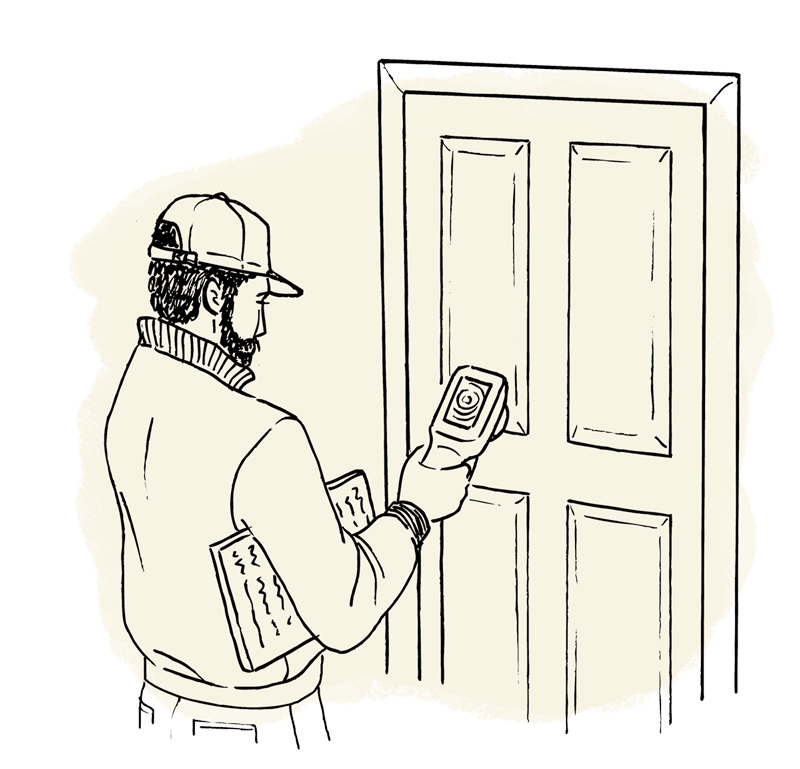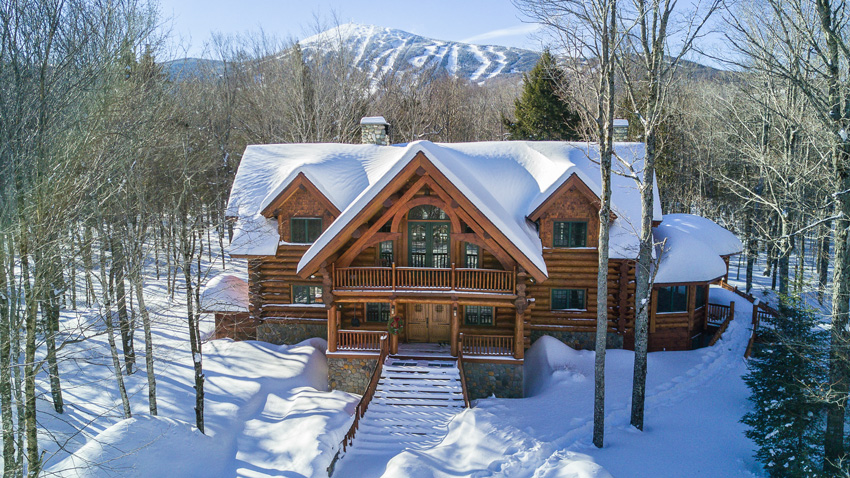
Home Rx
Realtor/science writer/self-proclaimed “house geek” Hannah Holmes on maximizing energy savings in an old home, security cameras for snowbirds, and more.
Illustrations by Christine Mitchell Adams
Have a question for Hannah?
Send your Maine home or garden conundrum to hannah@mainehomes.com and we may feature it in an upcoming column.
I’m concerned about keeping the heat inside during the winter. Most of our exterior walls are not insulated. I would love some suggestions for insulating an older home and other recommendations that would help with heating costs.
NANCY SORICE OTTAVIANO, ROCKPORT
The short answer here is to hire an energy auditor ($300–$800 depending on the size and complexity of your house). Insulating and weatherizing are investments. They pay off in lower heating bills and a healthier planet. But as with any investment, you want to put your money where it will earn the biggest, quickest return.
Because Maine’s older houses are all so different, no single investment strategy will suit every building. An auditor will analyze your home as a unique system, and then guide your investments accordingly.
Efficiency Maine has a list of energy auditors, and the organization offers fat rebates and loans for energy improvements to a primary residence — including an energy audit. Visit efficiencymaine.com to learn more.

I’d like to know more about webcams we could set up in our home when we’re away in the winter. I’d love to be able to see the water view with the click of a button, not to mention make sure there are no issues inside the home, such as standing water and unwelcome visitors.
KATHY LILLY, PEMAQUID

Security cameras are a dime a dozen, peeking out of smoke detectors, doorbells, and teddy bears. In fact, if you have an old iPhone and a smart toddler, he or she can probably hook you up.
But transportation for your images will cost you, in the form of an internet or cellular data connection. Whether you’re 10 miles or 1,000 miles away, you need a means of moving image data out of the camera and into your home computer or phone.
With internet in place, you just need a program that allows your home computer or phone to shake hands with your remote camera, whether that’s an old smartphone or a laptop hooked up to a $5 USB webcam. Free programs are plentiful, but linking the elements together yourself will demand a certain degree of stamina.
Plug-and-play webcams like those available from Nest and Arlo ($150–$200 for an indoor system; up to $349 for an outdoor one) do all the linking for you, and give you sleek portals to visit your camera from a computer or phone. For a monthly fee, you may also be able to store video, or program the camera to alert you when it detects motion.
If you are lacking internet access, you’ll need a cellular data connection. If your carrier doesn’t provide a camera plan (Verizon offers Nest; AT&T offers Arlo), you may have to call in a security company, or a teenager.
How can I maintain my view while respecting both the Maine code on shoreline tree cutting and preserving the environment? Can I have my cake and eat it too?
BARBARA ACOSTA, TRENTON
Stop! In the name of shoreland zoning, lay down your weapons!
Within 75 to 100 feet of any substantial water body, we’re not allowed to chop and hack vegetation however we please. The state protects those shoreland plants, because plants protect healthy soil, and healthy soil protects the water bodies we find so pleasing to gaze upon.
But the state doesn’t want you to be sad. So you are generally allowed to give low-growing shrubbery a haircut at three feet so you can see over it. And typically you can trim off the branches on the bottom third of trees, so you can see between them.
For more generalities, find the Maine Shoreland Zoning Handbook by googling: “maine shoreland zoning handbook.” And for the specific implications on your land, visit the town code enforcement officer.


How do you know when there is too much snow on the roof and it’s time to go up there and get it off? I’m in SoCal and that has always puzzled me.
MARTHA WARD, ANAHEIM, CALIFORNIA
The steep roofs of New England are not a fashion statement. Among other benefits, a nice pitch transfers some snow weight onto the sturdy walls. And under the shingles, the framing of a northern home is robust, to hold up whatever nature dumps down.
Yankee ingenuity aside, you may still need to address a rooftop buildup. If your house has ever suffered an ice dam, you’ll want to clear snow along the eaves with a roof rake on a regular basis. Ice dams are ridges of ice that form at the lower edge of a roof. Once they’re in place, melted snow that trickles down the roof will pool behind the dam. That standing water can get under the shingles, and into the house.
Especially on low-pitched roofs, and dormers that concentrate snow in a valley, frequent raking will maintain a clear path for descending meltwater. If the ice gets ahead of you, your hardware store will have melt-pellets that you can toss up onto the glacier. Be warned: Any time your rake touches an asphalt shingle, it pulls off some gravel. Eventually, that will cause leakage in all four seasons.
Hannah Holmes is a real estate broker at Keller Williams Realty Greater Portland and the author of four science titles, including The Secret Life of Dust and Suburban Safari. A veteran renovator of old houses, she blogs about humans and their territorial issues at geekrealtyblog.com.





